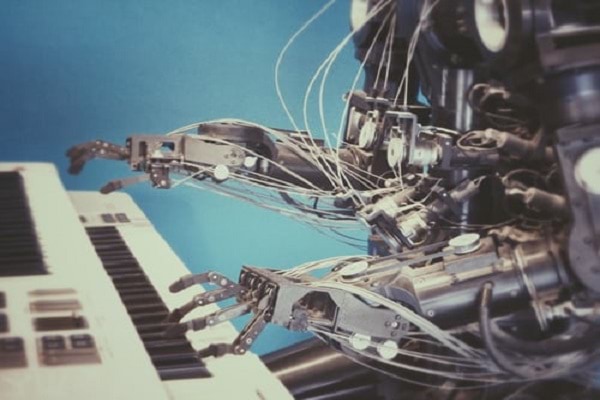Every organization strives to make its operations faster and more efficient. One way to achieve this is through automation. Automation has helped many organizations accomplish a given level of their desired efficiency.
Yet, they still want to optimize their resources and costs further. That is where hyperautomation comes in as the next better option.
Hyperautomation is an advanced form of automation. It combines artificial intelligence, natural language processing, machine learning, and optical character recognition. It enables businesses to serve their customers and fulfill their goals fast and efficiently.
In this article, we’ll discuss what hyperautomation is and how it compares to intelligent automation. We’ll also have a look at the benefits that hyperautomation brings to businesses, how it supports end-to-end automation, and where it is applied in real-life.
What is Hyperautomation?
Gartner introduced the term hyperautomation in 2019. Hyperautomation refers to a system that incorporates additional intelligence into the already present automation initiatives. It focuses on optimizing various stages in business operations, especially the difficult ones.
Hyperautomation combines advanced technologies, such as artificial intelligence, natural language processing, machine learning, optical character recognition, and robotic process automation. It automates complex processes in an organization, including those requiring special expertise.
The merging of artificial intelligence with robotic process automation has elevated it further. It can now undertake virtual tasks previously reserved for employees.
Hyperautomation vs. intelligent automation
Hyperautomation and intelligent automation appear interchangeable terms. However, there are some distinctions between these processes. The two have related underlying principles but have discernable differences in field applications.
Intelligent automation primarily uses robotic process automation, machine learning, artificial intelligence, and business process management. It helps to streamline tasks within an organization by simplifying processes. It also enhances decision-making and improves the efficiency of operations in businesses.
The primary differentiating factor for hyperautomation from intelligent automation is its higher advancement. It combines more technologies, and its application is more expansive.
Hyperautomation, in simpler terms, is automating everything in a firm that can become automatic. It uses technologies used in intelligence automation, such as machine learning, artificial intelligence, and robotics process automation. It also uses other technologies, such as optical character recognition, natural language processing, and intelligent document processing.
Automation focuses on accomplishing repetitive tasks. But, hyperautomation exploits business intelligence to optimize the employees’ operations. It aims to quicken processes in an organization and boost human capabilities to work efficiently and minimize errors.
How hyperautomation benefits businesses
Adding a competitive advantage
Every business now needs hyperautomation to maintain a competitive edge in the market.
Hyperautomation enhances the employees’ productivity. It potentiates the workforce’s capabilities by reducing their effort and maximizing their talents. Employees now focus less on doing basic repetitive tasks like data entry. They can now spend more time on activities like building relationships with their customers.
Hyperautomation increases the knowledge available to labor systems. Workers can now use more sophisticated technologies, eliminating the limits of each process in a firm.
Improving efficiency
Hyperautomation unifies corporate strategy and optimizes end-to-end processes in an organization. It makes organizational processes run more efficiently by reducing manual operations. The firm can direct more time and resources to achieve its ultimate goals.
The deep insights that come as a result of hyperautomation are essential for the elimination of business inefficiencies. You need to have a clear concept of what the company needs, its challenges, and areas of improvement.
For many firms, this can get blurry because of a lack of business intelligence. Hyperautomation bestows a firm with advanced analytics capabilities. These help identify market trends and make predictions of business outcomes.
Promoting collaboration
Hyperautomation promotes team collaboration within an organization by linking every process in a firm. It also ensures that each employee has a direct linkage to the automation process. Thus, everyone’s actions influence business operations. This connection ensures that employees work as teams with a similar goal.
Improving data management
Notably, hyperautomation works by integrating several technologies and processes. Its efficiency requires a constant flow of data between storage and the premise infrastructure. So, there is continuous communication between the core systems and data storage.
How hyperautomation supports end-to-end automation
Hyperautomation supports end-to-end automation by combining the strengths of each of its technologies. It uses robotic process automation to mimic human behavior and AI to gather business intelligence significant for making critical business decisions. Additionally, it uses digital process automation platforms for orchestration.
Ultimately, hyperautomation enables businesses to become “hands-off” in many of their activities. By combining robotics process automation with AI, it allows organizations to apply intelligence across their operations. In that way, companies achieve the best returns and value for investment.
Where can hyperautomation be applied?
Hyperautomation has a wide range of applications. It is applied in insurance companies, customer service operations, marketing, health care, and retail sectors.
Insurance
Insurance companies have a large labor force that engages in repetitive manual tasks. These firms deal with many claims every day that need similar procedures done over and over again. The application of hyperautomation technologies helps relieve insurance firms of these regular time-consuming processes.
Hyperautomation limits the amount of time that employees have to deal with data entry. They can then devote much of their time to other activities that add value to their company.
This technology allows insurance companies to process their actions faster. It grants higher efficiency than the human workforce for tasks requiring repetitive procedures. Employees suffer less strain, ensuring higher productivity in these firms.
Besides, hyperautomation technologies, such as artificial intelligence, help give accurate market insights. Insurance companies can use such market knowledge to anticipate probability claims.
Moreover, business intelligence from AI helps them make correct forecasts. Thus, they can engage in competitive prices and policy-making that align with their profit-making goals.
Customer service operations
Customer service operations need hyperautomation to achieve high efficiency and productivity. They aim to address the company’s customers and help them with information about a company’s products. Hyperautomation ensures that processes involved in fulfilling communication between the client and the company are effective.
For instance, natural language processing deals with emails and queries, while machine learning classifies information by category. On the other hand, robotics process automation helps send and respond to the clients’ emails. These features reduce the cumbersome work of dealing with every client manually.
Marketing
Marketing is another area where hyperautomation is crucial. Hyperautomation allows companies to track the activities of visiting users on their websites. Firms can monitor customers’ actions using their IP addresses and feed the obtained data into an outreach platform. The outreach platform classifies their profiles and prioritizes them during the marketing process.
Hyperautomation enables a company to accumulate relevant customer data. Doing so improves targeting during product promotion strategies.
Healthcare
The nature of activities in hospitals and other health care centers is intense. Healthcare facilities deal with hundreds of patients every day. Each patient must enter their data into the system during every visit.
Through hyperautomation, hospitals develop intelligent billing services. Artificial intelligence and robotics process automation identify the medical policy coverage conditions, while machine learning facilitates speech-to-text transcription. These technologies make the input of patient data into the hospital systems faster.
Hyperautomation helps reduce the number of tasks that medical practitioners have to handle. Thus, they have more time dedicated to service delivery.
Retail sector
Hyperautomation applications in the retail sector help improve the performances of many businesses. Incorporating robotics process automation in the retail sector boosts productivity and improves the customer care service experience.
The increasing adoption of e-commerce means that many retail companies should incorporate hyperautomation to realize high online sales. They can use hyperautomation to get the pricing analytics of the market. This insight would help them understand the market better and set competitive prices.
AI can also improve their understanding of consumers’ purchase behaviors. They can then develop marketing strategies that target these consumers, resulting in improved sales.
Conclusion
Organizations need to adopt hyperautomation to remain competitive in the corporate world. Hyperautomation ensures that the labor force deals less with repetitive activities. Instead, machine learning, artificial intelligence, natural language processing, and robotic process automation handle such takes.
Hyperautomation has several advantages to businesses – most notably, improved productivity. It maximizes the utilization of employee talents by potentiating their capabilities. Hyperautomation makes it easy to handle even the most sophisticated of technologies in a company. It optimizes end-to-end processes in a company, enhancing efficiency at every stage. Its implementation is thus critical to achieving business goals as it promises high returns on investment.










Comments: